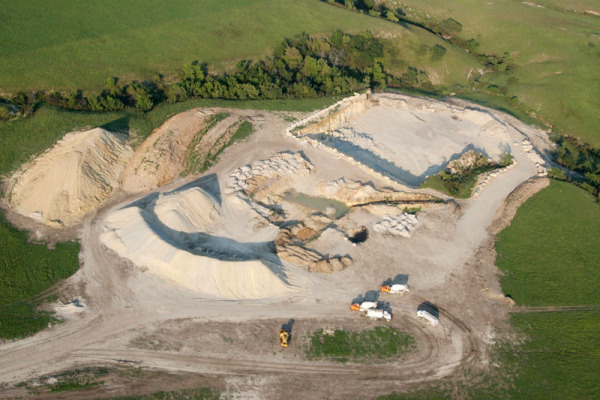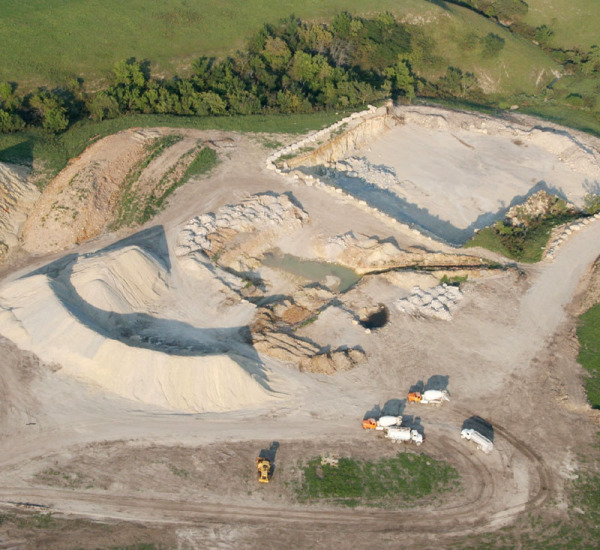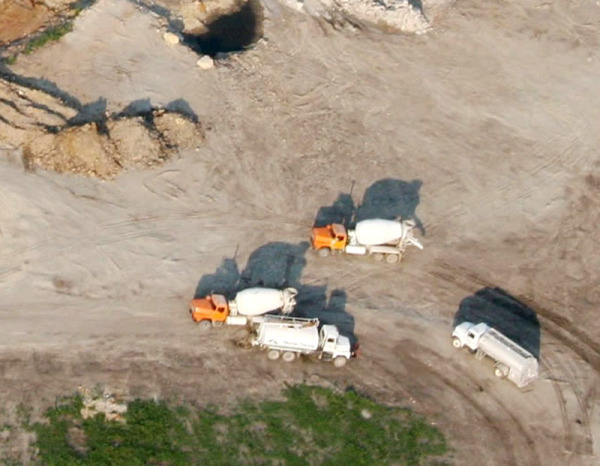9/9/10 Just like in the movies: Documentary "Windfall" gets right down to the real nitty-gritty of what happens to a Town when wind developers move in
WINDFALL DOCUMENTARY EXPLORES THE PERILS OF WIND POWER
Click on the image above to watch the trailer from "Windfall"
SOURCE:Wall Street Journal
September 9, 2010
By Anthony Kaufman
“Windfall,” a new documentary that premieres Friday at the Toronto International Film Festival, could take the sails out of wind power. The film observes the deeply divided residents of Meredith, New York — an Upstate farm community in decline — as they debate the pros and cons of allowing wind turbines on their land. Local proponents champion the promise of green energy and monetary compensation, while detractors question the efficiency of wind-generated energy and the drawbacks of living among 400-foot tall towers with gigantic rotating blades.
First-time director Laura Israel, who has a log cabin in Meredith, first became aware of the town’s wind energy debate when she read stories in the local newspaper about the potential dangers of turbines to the bird population (bats are also at risk). “I went through the same process myself as they did in the film,” says Israel. “First, I thought, maybe I’d like to get a wind turbine, but then I started going on the Internet and realized there was more to the story.”
Israel videotaped in Meredith for about a year, documenting contentious board meetings and interviewing residents, and also visiting other areas in New York, such as Lewis County, where wind turbines have already taken hold. The film offers few experts on either side of the debate; rather, it allows local townspeople to discuss their own research, experiences and fears, such as the wind turbine’s “flicker effect,” as the machines pass across the sun and cast immense shadows, as well as the dangers of their low frequency hum.
Robert Bryce, author of “Power Hungry: The Myths of ‘Green’ Energy and the Real Fuels of the Future,” and a frequent critic of the wind industry (in the op-ed pages of the Wall Street Journal), says the “infrasound” issue is the most problematic for the wind industry. “They want to dismiss it out of hand, but the low frequency noise is very disturbing,” he explains. “I interviewed people all over, and they all complained with identical words and descriptions about the problems they were feeling from the noise.”
Because of wind energy’s massive expansion — the five-year average growth rate is up 39%, according to the American Wind Energy Association — Bryce suggests that the kinds of conflicts depicted in the film “are going to be much more common if it’s allowed to grow as fast as it could,” he says. “There’s a lot of pissed off people out there.”
Israel doesn’t want her film to be used as an advocacy prop for anti-wind advocates, however. She just wants people to be informed. “What I would want people to do is research it and look at it critically.” Invoking the words of Gordon Yancey, an outspoken wind critic from Tug Hill, NY who appears in the film, Israel advises, “Do your homework.”
Or as Bryce adds, “There’s no such thing as a free lunch and it’s the same with wind energy.”
 WIND TURBINES IN THE NEWS
WIND TURBINES IN THE NEWS
Vestas Wind Tumbles After Reporting That Blade Broke on Turbine Prototype
SOURCE: BLOOMBERG.COM
By - Sep 9, 2010
Vestas Wind Systems A/S fell to its lowest in almost two years in Copenhagen trading after the world’s largest wind turbine maker said a blade snapped on a prototype and Danske Bank A/S downgraded the stock.
A six- to seven-meter (20 to 23 feet) portion came off the blade of the test V112 wind turbine late yesterday in Lem, western Denmark, Michael Holm, a Vestas spokesman, said today from Randers, Denmark. “We’re looking into the root cause. We don’t see this as a design error.”
THE POWER OF PICTURES TO FOOL PEOPLE
SOURCE: Jefferson's Leaning Left, www.jeffersonleaningleft.blogspot.com
September 9 2010
Over the weekend I put a post here where I mentioned I had just finished reviewing the current September 2010 edition of the leading wind industry business journal, “North American Wind Power.”
I warned that the editorial message of that journal, written for industry insiders, was to keep pushing for a national standard imposed from Washington requiring utilities to get a certain percentage of their power from wind — and to hell with all the adverse consequences of that, including your pocketbook.
9/9/10 T-Boone-doggle? Talk about buyers remorse: What to do with all those 400 foot wind turbines?
Click on image below to hear T Boone Pickens talk about the turbines he's stuck with because he was unable to take private property through eminent domain for his wind farm.
9/8/10 No need to read between the lines--
 News articles about wind turbine noise and health
News articles about wind turbine noise and health
Milner, Catherine (January 25, 2004). Telegraph. “Wind farms ‘make people sick who live up to a mile away’”.
Keller, James (May 13, 2006). Hamilton Spectator. “Family says turbine vibrations made them ill enough to move”.
Kriz, Kathy (October 12, 2006). WHAM-TV. “Could Wind Turbines Be A Health Hazard?”.
Chronicle Herald (August 27, 2007). “Quietly sounding alarm; Forced from home after noise from wind farm turbines made family sick, d’Entremont telling others his story”.
St. James, Janet (July 29, 2008). WFAA-TV. “Neighbors claim wind turbine makes them ill”.
CTV (September 28, 2008). “Wind turbines cause health problems, residents say”.
Keen, Judy (November 3, 2008). USA Today. “Neighbors at odds over noise from wind turbines”.
Tilkin, Dan (November 14, 2008). KATU-TV. “Wind farms: Is there a hidden health hazard?”.
Sudekum Fisher, Maria (February 3, 2009). Associated Press. “NW Missouri man sues Deere, wind energy company”.
Takeda, Tsuyoshi (February 6, 2009). Asahi Shimbun. “Something in the Wind as Mystery Illnesses Rise”.
Blaney Flietner, Maureen. Bobvila.com. “Green Backlash: The Wind Turbine Controversy”.
Nelson, Bob (March 2, 2009). Morning Show, KFIX. “Wind farms: Interview of Malone and Johnsburg residents”.
Mills, Erin (March 8, 2009). East Oregonian. “Loud as the wind: Wind tower neighbors complain of noise fallout”.
Miller, Scott. A-News, CTV Globe Media. “Wind Turbines Driving People From Their Homes”.
Tremonti, Anna Maria (April 14, 2009). The Current, CBC Radio One. “Wind Turbines: Health”.
CBC News. April 14, 2009. “Wind turbines causing health problems, some Ont. residents say”.
Buurma, Christine (April 21, 2009). Wall Street Journal. “Noise, Shadows Raise Hurdles For Wind Farms”.
CTV Toronto (April 22, 2009). “Reports of wind farm health problems growing”.
Canadian Press (April 23, 2009). CBC News. “Formal study needed into health effects of wind turbines, doctor says”.
Miller, Scott. A-News, CTV Globe Media. “Daughter’s Earaches Blamed On Wind Farm”.
Epp, Peter (May 5, 2009). “Survey points to health woes arising from wind turbines”.
Mayne, Paul (May 7, 2009). Western News. “Is public’s health blowing in the wind?”.
Delaney, Joan (May 13, 2009). The Epoch Times. “Wind turbines blamed for adverse health effects”.
Alteri, Beth (May 15, 2009). WLBZ2. “Does wind turbine noise affect your sleep or health?”.
Hale, Caleb (May 23, 2009). Southern Illinoisan. “Health can be a key issue when living near wind farm”.
Hessling, Kate (June 4, 2009). Huron Daily Tribune. “Solutions sought for turbine noise”.
Boles, Stephen (June 7, 2009). Red, Green and Blue. “Wind Turbine Syndrome: Are wind farms hazardous to human health?”.
Kart, Jeff (June 11, 2009). Bay City Times. “Wind turbine noise is rattling some residents in Michigan’s Thumb”.
Walsh, Bill (June 19, 2009). WNEM. “Wind Farms Ruining Quality of Life?”.
Hundertmark, Susan (June 24, 2009). Lucknow Sentinel. “St. Columban residents get informed on wind turbine health concerns”.
Yoshida, Noriyuki; and Yasuda, Koichi (July 1, 2009). Daily Yomiuri. “Wind power has its own environmental problems”.
ABC News (July 15, 2009). “Wind turbine noise ‘forces’ couple out”.
Pagano, Margareta (August 2, 2009). The Independent. “Are wind farms a health risk? US scientist identifies ‘wind turbine syndrome’”.
Martin, Daniel (August 2, 2009). Daily Mail. “Living near a wind farm can cause heart disease, panic attacks and migraines”.
Stewart, Linda (August 3, 2009). Belfast Telegraph. “Is it dangerous to live close to wind turbines?”.
Woodrow, Shane (August 6, 2009). WIN TV. “Windfarm Research”.
Anne Ravana (August 7, 2009). Maine Public Broadcasting Network. “Discontent of Mars Hill Residents Leads to Lawsuit Against First Wind”.
Baca, Nathan (August 11, 2009). KESQ. “Migraine, Wind Turbine Connection Still Being Examined”.
Lynds, Jen (August 12, 2009). Bangor Daily News. “Mars Hill windmills prompt civil lawsuit”.
A Current Affair (August 14, 2009). Nine-MSN. “Electricity nightmares”.
Wind Concerns Ontario (August 16, 2009). “Wind Victims Gagged and Silenced in Ontario”.
ABC News (August 18, 2009). “Pyrenees Shire questions wind farm noise”.
Wilson, Lauren (August 22, 2009). The Australian. “Farmers flee as turbines trigger despair”.
Wilson, Lauren (August 24, 2009). The Australian. “No relief for land owners affected by wind farms”.
ABC News (August 28, 2009). “Govt urged to probe wind farm illness claims”.
ABC News (September 4, 2009). “Qld noise experts to test Waubra wind farm”.
Hall, Cheryl (September 4, 2009). Stateline Victoria, ABC. “Wind Farms causing head spins”.
Reading, Lyndal (September 7, 2009). Weekly Times. “Anger over wind turbine noise”.
Chatham Daily News (September 22, 2009). “Wind turbines still a problem for some”
Brown, Judy (September 30, 2009). Farm Country. “Wind turbines generate health, farming concerns”.
Stevens, Kim (October 15, 2009). The Courier. “Health check at Waubra wind farm”.
Whittle, Julian (October 22, 2009). News & Star. “Living near turbines is ‘mental torture’, Carlisle inquiry told”.
Vivian, Richard (November 12, 2009). Orangeville Banner. “Answers definitely not blowing in the wind”.
Vivian, Richard (November 16, 2009). Orangeville Banner. “No proven link exists between wind turbines, health problems”.
Vivian, Richard (November 19, 2009). Orangeville Banner. “MOE pledges ongoing research on turbines, health”.
CBC News (November 18, 2009). “Wind power health effects queried by municipal group”.
Annis, Robert (November 19, 2009). Indianapolis Star. “Boone County looking into wind farm health fears”.
Crosby, Don (November 20, 2009). Owen Sound Sun Times “Bruce seeks wind turbine health study”.
Lam, Tina (November 24, 2009). Detroit Free Press “Living by wind farms no breeze, some say”.
Yomiuri Shimbun (November 29, 2009). “Govt to study effects of wind farms on health”.
Leake, Jonathan, and Byford, Harry (December 13, 2009). Sunday Times. “Officials cover up wind farm noise report”.
White, Leslie (December 24, 2009). Weekly Times. “Report critical of wind farms”.
Braithwaite, Chris (December 30, 2009). Chronicle. “Wind tower neighbor bought out for health reasons”.
Schliesmann, Paul (January 16, 2010). Whig-Standard. “Wind turbines: Expert says people are suffering health problems from being too close to structures”.
Ito, Aya; and Takeda, Tsuyoshi (January 19, 2010). Asahi Shimbun. “Sickness claims prompt study of wind turbines”.
Squair, Sylvia (February 4, 2010). “Throwing Caution to the Wind”.
Hall, Cheryl (February 19, 2010). Stateline Victoria, ABC News. “Claims of wind farm illness”.
Bryce, Robert (March 1, 2010). Wall Street Journal. “The Brewing Tempest Over Wind Power”.
ABC News (March 4, 2010). “Govt to investigate wind farm complaints”.
Fox Business (March 4, 2010). “Wind Farms Causing Health Problems?”.
Gray, Louise (March 6, 2010). Telegraph. “Noise complaints about one in six wind farms”.
Martin, Steve (March 16, 2010). Ballarat Mornings, ABC Victoria. “Wind Turbine Syndrome with Dr Nina Pierpont”.
Snyder, Paul (April 1, 2010). Daily Reporter. “Landowners sue Invenergy over Forward Wind Energy Center”.
Spolar, Matthew (April 12, 2010). Concord Monitor. “Effects of turbines in question”.
Kottke, Colleen (April 18, 2010). Fond du Lac Reporter. “Oakfield couple files PSC complaint over wind farm”.
Roper, Matt (April 19, 2010). Daily Mirror. “Couple driven out by noisy wind turbines sue for £380,000″.
BBC News (April 27, 2010). “Lincolnshire windfarm rejected to help autistic boys”.
Oike, Yuki Tsuruta (April 30, 2010). “Japanese conference against big wind”.
Mulholland, Jessica (March 1, 2010). Governing. “Are Wind Farms a Health Risk?”.
Snyder, Paul (May 6, 2010). Daily Reporter. “Wind farm property sells at sheriff’s sale”.
O’Gorman, Josh (May 7, 2010). Rutland Herald. “Hospital hosts wind debate”.
Craddock, Chelsea (May 16, 2010). Watertown Daily Times. “Hospital shows off balance center”.
De Long, L. Sam (May 26, 2010). Watertown Daily Times “Another health problem caused by turbines”.
AAP (May 27, 2010). Herald Sun. “Sick residents claim wind farm ‘torture’”
WNEM (May 28, 2010). “Homeowners File Lawsuit Over Wind Turbines”.
Weaver, Alex (May 29, 2010). The Standard. “An ill wind blows in”.
McConville, Christine (June 2, 2010). Boston Herald. “Falmouth wind-turbine noise has local residents whirling”.
Simpson, Barbara (June 2, 2010). Delhi News-Record. “A quiet room of their own: Residents impacted by wind turbines sleep in Delhi”.
Sellars, Paul (June 3, 2010). Weekly Times. “Wind turbine illness claims”.
Lazzaro, Kellie (July 5, 2010). ABC News. “Residents reject wind farm health findings”.
Australia.to News (July 27, 2010). “Family First Senator seeks enquiry into health effects of wind farms”.
Hugus, Elise R. (July 27, 2010). “Bylaw in the Works to Regulate Turbine Noise”.
9/7/10 What's Wrong With this Picture: National and state government throws out life lines to wind industry but refuses safety net for wind farm residents whose lives have been ruined. PSC to Wisconsin residents: You got a problem with it? Too bad. Call a lawyer

NOTE FROM THE BPWI RESEARCH NERD:
The majority of the Wisconsin Wind Siting Council did all they could to come up with rules that make things easier for the wind industry and harder for local government and wind project residents seeking protection and remedy.
This was hardly surprising considering the majority of the council members had a direct or indirect financial interest in doing so.
The Public Service Commission recently voted to approve rules that do the same.
Only one PSC commissioner, Lauren Azar, expressed any concern for those who will be impacted by the rules.
She repeatedly asked for provisions to protect Wisconsin residents and insure remedy for problems, specifically requesting a provision that would act as a 'safety net' for those who suffer verifiable turbine related impacts to their health.
Callisto flatly refused to consider this, indicating aggrieved residents could bring a private lawsuit against the wind company.
Azar pointed out that most rural Wisconsin residents could not afford the approximately $200,000 in non-recoverable legal fees required to bring a lawsuit against such large companies and the PSC had an opportunity to build in protections.
Callisto and Meyer were unmoved.
In the end Commissioner Azar voted with Callisto and Meyer, much to the dismay of those whose lives, futures and communities will be forever changed by rules that err on the side of corporate interests instead of caution.
Click on the image below to see Governor Doyle's cameo in a video posted by the American Wind Energy Association on YouTube
Will wind energy bring promised jobs to Wisconsin? If so, how many?
Better Plan posted this a few days ago, and we'd like to post it again as a reminder---
In Wisconsin, Facts About ‘Green Job’ Creation Elusive as the Wind
SOURCE MacIver News Service | September 1, 2010
By Bill Osmulski
MacIver News Service Investigative Reporter
[Madison, Wisc...] Although they are touted and promoted by policy makers and opinion leaders across the state, accurately defining and keeping track of ‘green jobs’ has proven nearly impossible in Wisconsin.
Take, for example, ‘green jobs’ associated with the wind industry.

Wisc. Governor JimDoyle (D)
“Clean energy technology and high-end manufacturing are Wisconsin’s future,” Governor Jim Doyle said in his final State of the State address. “We have more than 300 companies and thousands of jobs in the wind industry.”
That statistic is impossible to verify.
The State of Wisconsin does not track those companies nor the jobs within the industry.
When contacted, the Office of Energy Independence (an agency created by Governor Doyle in 2007) directed MacIver News to Wisconsin Wind Works, a self-described “consortium of manufacturers representing the wind manufacturing supply chain within Wisconsin.”
The advocacy group maintains an online wind energy-related supply chain database, although a routine examination of the data proved just how unreliable the figures are.
When the online, searchable database was utilized earlier this summer, it listed 340 companies in Wisconsin connected to the wind industry, a fact which, without additional investigation would appear to be in line with the Governor’s statement.
However, further examination showed many of those companies were not currently serving the wind industry and were only listed because they someday could serve the wind industry.
For example, the database listed 38 manufacturers, but only 24 of them have anything to actually do with the wind energy sector presently.
Of those 24 Wisconsin manufacturers, only eight were categorized as primary suppliers.
Another four companies were listed as both primary and secondary suppliers. A MacIver News Service reporter contacted all eight primary suppliers and the four companies listed as primary/secondary suppliers in our initial query and what we found further eroded the credibility of Governor Doyle’s claims.
When contacted, the companies listed as both primary and secondary suppliers all described themselves merely as secondary suppliers. That means they produce products that are not exclusive to the wind energy.
For example, Bushman Equipment manufactures lifts that move heavy pieces of equipment, which, among many other uses, can be used to handle wind turbines.
Wisconsin Wind Works’ database is not only generous with the number of companies within their supply chain it associates as being primary suppliers, there are issues with the actual job numbers listed for each company as well.
Many of the figures are either inflated, the jobs are not located in Wisconsin, or they cannot be tied to wind energy.
For example, Rexnord Industries was one of the eight Wisconsin manufacturers listed in our query as directly serving the wind energy industry. The database shows the company has 6,000 employees.
Yet a Rexnord official told the MacIver News Service that the company only has 1,500 employees in Wisconsin, and only five of those have jobs which are directly tied to the wind industry.
Wisconsin Wind Works’ database says Orchid International has 600 employees, but a company spokesperson told MacIver it only has 150.
Amsoil Inc. in Superior has 236 employees listed in the Wisconsin Wind Works database, but a company representative told the MacIver News Service that only 6 of them work on wind energy-related products.
In all, at the time of our search, the database claimed 7,632 jobs among the eight manufacturers that were current primary suppliers to the wind industry. Yet, the MacIver News Service was only able to identify 31 jobs at those companies which were specifically tied to wind energy related products.
Manufacturers told MacIver News that other employees might work on wind-related products occasionally, but it does not represent the bulk of their workload.
Another 1,077 workers are listed among the secondary suppliers and we did not investigate that claim.
VAL-FAB, one of the companies listed as both a primary and secondary supplier, explained to MacIver News that it initially had high hopes for the wind energy industry that never materialized. The company specializes in fabrication for the energy sector.
William Capelle, Director of Business Development at VAL-FAB, said “At first we thought we might be able to manufacture the actual towers, but it turns out 90 percent of those are imported from Spain.”
Since the MacIver News Service first examined the Wisconsin Wind Works database, the number of companies listed has increased to 360.
A reporter attempted to contact the organization for comment about the veracity of their data, but Wisconsin wind Works, which solicits members by selling itself as the
“preferred partner of wind energy professionals,” did not respond.
They are, however, holding a Wind Energy Symposium in Milwaukee on October 13th.
Meanwhile the Office of Energy Independence continues to pursue the Doyle Administration’s green energy policies.
As Doyle said during his final State of the State address, “anyone who says there aren’t jobs in the clean energy economy had better open their eyes.”
There is no doubt that some jobs in the wind industry exist in Wisconsin. The accurate number of these ‘green jobs’ is proving to be, at best, elusive
Representatives of Doyle’s office did not respond to repeated request for comments regarding the information contained within this article.
WIND POWER WANES WITH FADING FEDERAL INCENTIVES
SOURCE: NPR, www.npr.org
September 6, 2010
by Jeff Brady,
Wind power, one of the largest segments of the renewable energy market, will experience a sharp decline in growth this year.
The slowdown comes as a surprise because the stimulus bill, which President Obama signed into law 18 months ago, included a big boost for renewable forms of electricity in the form of $43 billion for energy projects.
Last year, 10,000 megawatts of wind power were brought online in the United States — that’s enough to power nearly 300,000 homes. In 2010, the U.S. Energy Information Administration estimates, that number will be 57 percent lower. It will be the first time in six years that the growth rate of the wind industry will actually decline.
There are several reasons for this, but probably the biggest factor has to do with government incentives. The wind industry typically rises and falls with the passing and expiration of federal tax credits.
Depending On Federal Subsidies
Wind projects are expensive to build, so developers have depended on federal subsidies that encourage investment in renewable energy.
When the credit markets dried up in 2008, so did the money for new projects. The White House and Congress threw the industry a lifeline with the stimulus package in the form of investment tax credits.
Right now, if you build a wind project, the government will, essentially, cut you a check for 30 percent of the cost. But that incentive is running out of rope and scheduled to expire at the end of 2010. That deadline prompted a lot of activity last year.
“Everybody moved their projects forward into 2009 to take advantage of it,” says George Sterzinger, executive director of the Renewable Energy Policy Project. But now, he says, some developers are waiting to see if the credit will be extended.
And with natural gas relatively cheap now, some utilities are choosing to build gas power plants rather than wind farms.
In response, the wind industry says it needs a federal mandate — a law that would tell those utilities they have to buy more renewable forms of energy.
“We’re kind of stuck without that long-term policy in place that sends the signals to the utilities that they need to purchase wind as part of a diversified portfolio,” says Denise Bode, CEO of the American Wind Energy Association.
A Renewable Energy Mandate
Obama has said he supports a renewable energy mandate. Getting it passed this fall is one of the wind industry’s priorities as lawmakers return to Capitol Hill.
The wind industry is still growing this year, just not as fast as last year, or the year before that.
“We are well on our way to doubling U.S. renewable generation capacity in the U.S., which is what the president had committed to,” says Matt Rogers, a senior adviser for Recovery Act implementation at the Department of Energy.
The question now is whether that pace can be maintained. Rogers says it would help to have more certainty when it comes to tax policy and other incentives. That would give investors and wind energy developers the information they need to make long-term plans instead of waiting around for the next government lifeline.
SECOND NEWS FEATURE
SOURCE: The Oklahoman, newsok.com
September 5 2010
BY CHRIS CASTEEL,
The Obama administration’s emphasis on clean energy and the fight in Congress over energy legislation is creating some tension among certain sectors, including the natural gas and wind power industries.
The American Wind Energy Association has been fighting to counter a recent column in The Wall Street Journal that challenged a key selling point of wind — that it reduces carbon emissions. The industry also is defending its federal subsidies, arguing that they are actually less than those received by oil and gas companies.
“We’ve been under attack by the fossil fuel industry for the last six months,” Denise Bode, CEO of the American Wind Energy Association, told reporters in July.
Bode is a former Oklahoma Corporation Commissioner, but she’s also a former head of the Washington-based trade group for independent oil and gas producers and was a highly visible advocate for the natural gas industry when she worked for the American Clean Skies Foundation.
Now, her organization is claiming that an oil and gas company trade group and think tanks financed in part with energy money are spreading misinformation to discredit wind as a renewable energy source.
Report released
The Western Energy Alliance, formerly the Independent Petroleum Association of Mountain States, released a report earlier this year that concluded renewable electricity mandates had actually caused pollution increases in Texas and Colorado because coal and natural gas plants operated less efficiently to accommodate the variability in wind sources.
The study was cited in The Wall Street Journal column, written by Robert Bryce, a senior fellow at the Manhattan Institute, and that column was then cited by the Heritage Foundation, a conservative think tank in Washington.
Bryce questioned whether wind energy’s contribution to reducing emissions would ever be significant and argued that the emphasis should be on natural gas.
Opposed to mandates
The wind energy association countered last week with Department of Energy figures showing carbon emissions had dropped steadily in Texas and Colorado as wind power was added to the mix. And it has cited studies projecting that emissions would drop by as much as 25 percent if wind generated 20 percent of electric power in the country.
It’s not just a fight between wind versus natural gas in Washington and beyond; there are lobbying battles between coal and natural gas and nuclear versus renewable sources.
And the stakes could be high.
Though pre-election fighting could further stall passage of energy legislation in Congress, Senate Majority Leader Harry Reid said last week that he still hopes to pass a bill before lawmakers adjourn for the year.
And Reid said he hopes to include a national renewable energy standard — a requirement for utilities to use a certain amount of renewable energy.
The wind energy association has been pushing hard for a renewable standard, arguing that it would spur manufacturing jobs while reducing emissions.
But lawmakers from states in the southeastern United States, where wind isn’t as plentiful or as easy to harness, have been strongly opposed to mandates for renewable energy.
Others watch, wait
Trade groups for oil and gas companies, including the Independent Petroleum Association of America, have not taken a public position on a renewable energy standard.
Jeff Eshelman, a spokesman for the group, said the organization has always cited the importance of all domestic energy sources.
“However, we do take issue with proposals that call for taxing American oil and natural gas companies to subsidize nonconventional energy resources,” he said.
The oil and gas industry has been pushing hard since President Barack Obama took office against his proposals to change tax rules the industry considers vital.
Democratic members of Congress also have proposed higher fees and penalties for offshore drilling.
Some lawmakers have promoted a broader mandate, called the clean energy standard, which would allow for more than just renewable energy sources such as wind and solar energy. And groups representing natural gas companies have argued that natural gas should be included in such a standard.
Bode recently suggested that the industry’s future is dependent on a renewable energy standard, and she said she was in the fight “to the bitter end.”
9/6/10 What to expect when you're expecting wind farm construction
What should you know before you lease your land to a wind developer?
You should know you must consult an independent lawyer BEFORE YOU SIGN. You will need someone who can tell you how the contract says the lease holder can use your land before, during and after construction.

This picture shows the construction of a wind turbine project in Kansas.
Let's look closer..... 
You should know how much of your land will be used during the construction phase and for how long, if you have any say at all in where the turbines will be sited, where the cables will be laid, and where the access roads will go. Only an independent lawyer can tell you what the contract says about this.
Look closer-

You should know that contracts may give the lease holder the right to go over, under, upon, along, and across your land, 24 hours a day, 7 days a week for the next 20 to 30 years. You should know what your rights are if changes, disputes or problems arise, and by what means problems may be resolved. An independent lawyer can tell you this.
Look closer..

You should know that most lease agreements will be legally binding not just to you, but to your kids, any heirs, any future buyers, successors, executors, or assignees of any kind. You should know that most lease agreements require that ANYONE who owns the land after you or wishes to buy the land from you, will be also legally bound by the terms of this contract. Only an independent lawyer can tell you exactly what this means to the future of your property.

(To see more of this series of construction photos taken in Kansas, click here.)